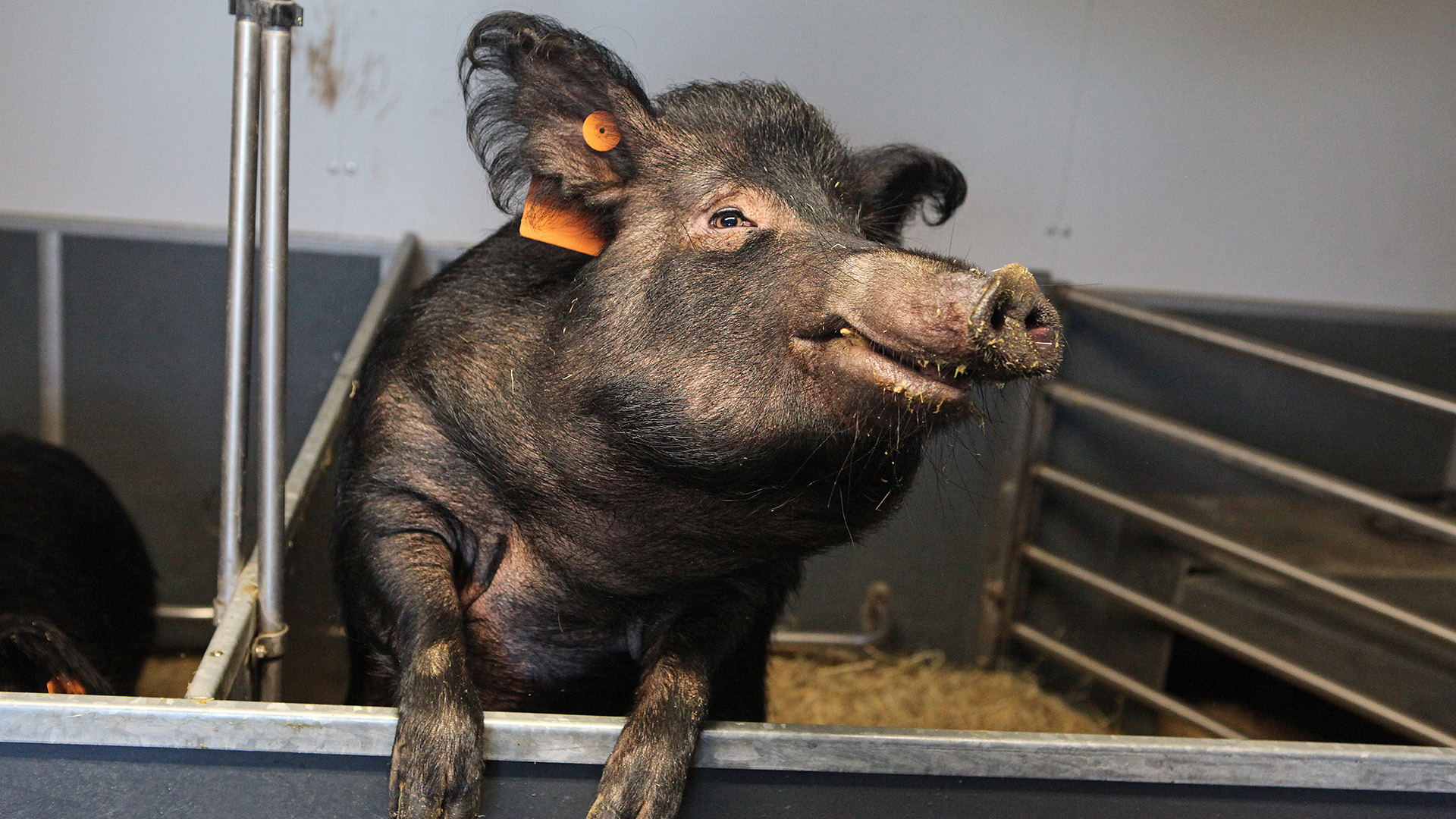A superior animal model for obesity and syndrome associated diseases
The Ossabaw pig, when allowed to eat excess food in captivity, can build five times more body fat than in production pigs, and become morbidly fat. Given that, this is a superior animal model for obesity and metabolic syndrome associated diseases.
The obese Ossabaw pig has repeatedly been pointed out as showing the broadest compliance with Metabolic Syndrome features. Already after 9 weeks of feeding with a high-calorie, atherogenic diet, female Ossabaw pigs nearly double their percentage body fat, show insulin resistance, impaired glucose tolerance, dyslipidemia (profound increase in the ratio of low-density to high-density lipoprotein cholesterol as well as hypertriglyceridemia), hypertension, and early coronary atherosclerosis - all of which are parts of Metabolic Syndrome.
The Ossabaw pigs are considered miniature swine, which means that when they are full-grown, they will be about the same size and weight as an adult person.
Additionally, their hearts and other organs are the same size as their human counterparts, which means medical implant designers do not need to scale their devices. The same size device that would fit an adult person will fit an adult pig.
The Ossabaw pig is an Iberian type of pig that was brought to America with the Spanish explorers in the 15th century and escaped or was placed on Ossabaw Island off the coast of Georgia.
Here it has subsequently lived in isolation for over 500 years, as it is not possible to swim to the mainland from the island. It is a particularly hard core of pigs that have survived and multiplied and still exist as a wild colony on the island.
Ossabaw Island has plenty of food during the summer months, while there is little to live on in the winter. Therefore, only the most hardy of the pigs have been able to survive and especially those who have been exceptionally good at storing nutrients for the winter period.
